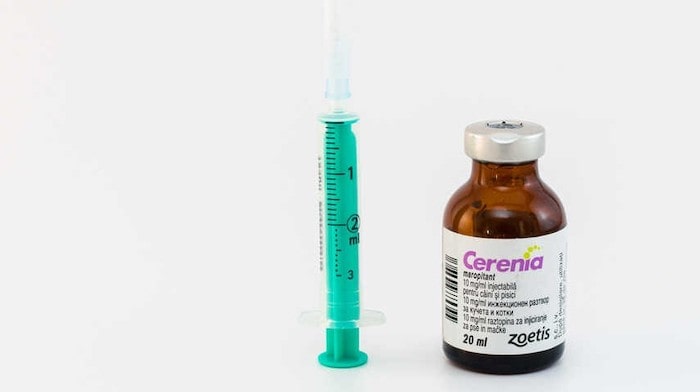When it comes to our beloved canine companions, ensuring their health and well-being is of utmost importance. However, there are instances where dogs may require medical intervention, such as medications to alleviate certain conditions or discomfort.
One such medication is Cerenia, commonly prescribed for the prevention and treatment of nausea and vomiting in dogs. While Cerenia has proven to be effective for many pets, it is essential to be aware of its potential risks and adverse effects.
In this article, we delve into the topic of Cerenia and explore how it can impact a dog’s health. Specifically, we address the concerning question: “How does Cerenia kill a dog?” We aim to shed light on the potential dangers associated with this medication, enabling dog owners to make informed decisions about their furry friends’ well-being.
Let’s delve into the topic and gain valuable insights into the impact of Cerenia on our canine companions.
What is Cerenia?
Cerenia is the brand name for maropitant citrate, a medication that belongs to a family of pharmaceuticals known as neurokinin-1 (NK1) receptor antagonists.
These medications inhibit the function of a molecule called substance P, which is involved in the transmission of pain and nausea signals in the brain. Cerenia reduces vomiting and inflammation in dogs by inhibiting substance P.

Cerenia is available in two forms: tablets and injectable solution. The tablets are used for oral administration and are indicated for the prevention of acute vomiting and the prevention of vomiting due to motion sickness in dogs 4 months and older.
The injectable solution is used for subcutaneous or intravenous administration and is indicated for the prevention and treatment of acute vomiting in dogs 16 weeks and older.
Cerenia is a prescription-only medication that can only be obtained from a veterinarian. It should be used according to the veterinarian’s instructions and dosage recommendations.
How does Cerenia work?
Cerenia works by blocking the NK1 receptors in the brain that are responsible for triggering vomiting. When a dog is exposed to something that causes nausea, such as motion, toxins, infections, or medications, substance P is released from nerve endings and binds to NK1 receptors in the brainstem. This activates the vomiting center, which sends signals to the stomach and other organs to induce vomiting.

Cerenia prevents this process by competing with substance P for binding to NK1 receptors. By occupying the NK1 receptors, Cerenia prevents substance P from activating the vomiting center and reduces or stops vomiting.
Cerenia also has anti-inflammatory properties that can help reduce pain and swelling in dogs with certain conditions. For example, Cerenia can help dogs with pancreatitis, which is a painful inflammation of the pancreas that can cause vomiting. Cerenia can also help dogs with osteoarthritis, which is a degenerative joint disease that can cause pain and stiffness.
What are the Side Effects of Cerenia?
Cerenia is generally well-tolerated by most dogs, but it can also cause some side effects in some cases. The most common side effects of Cerenia are:
- Pain or vocalization at the injection site (for injectable solution)
- Drowsiness or lethargy
- Lack of appetite or decreased food intake
- Diarrhea
These side effects are usually mild and transient and do not require medical attention unless they persist or worsen.

However, some dogs may experience more serious side effects of Cerenia, such as:
- Allergic reactions (e.g., hives, itching, swelling, difficulty breathing)
- Low blood pressure (e.g., weakness, fainting)
- Low heart rate (e.g., slow or irregular heartbeat)
- Liver problems (e.g., jaundice, increased liver enzymes)
These side effects are rare but potentially life-threatening and require immediate veterinary attention.
How Can Cerenia Kill a Dog?
Cerenia can kill a dog if it is given in excess or if the dog has an allergic reaction to it. Overdose of Cerenia can cause severe low blood pressure and low heart rate, which can lead to shock and death.
Allergic reactions to Cerenia can cause anaphylaxis, which is a severe allergic reaction that can cause swelling of the throat, difficulty breathing, collapse, and death.

The risk of overdose or allergic reaction to Cerenia can be increased by:
- Giving more than the recommended dose or frequency of Cerenia
- Giving Cerenia with other drugs that may interact with it (e.g., sedatives, opioids)
- Giving Cerenia to dogs with pre-existing medical conditions (e.g., heart disease, liver disease)
- Giving Cerenia to dogs that are allergic or hypersensitive to it or any of its ingredients
What are the Symptoms of Cerenia Overdose?
The symptoms of Cerenia overdose may vary depending on the amount and route of administration of the drug, as well as the individual sensitivity of the dog. However, some of the possible symptoms of Cerenia overdose are:
- Excessive drowsiness or sedation
- Weakness or collapse
- Pale gums or mucous membranes
- Slow or irregular heartbeat
- Difficulty breathing or shallow breathing
- Seizures or tremors
- Coma or death
How to Prevent Cerenia Overdose?
The best way to prevent Cerenia overdose is to use the drug as directed by your veterinarian. Here are some tips to avoid overdosing your dog on Cerenia:

- Read and follow the label instructions carefully
- Measure and administer the correct dose of Cerenia according to your dog’s weight and condition
- Do not give more than one dose of Cerenia per day (for tablets) or more than five consecutive days (for injectable solution)
- Do not give Cerenia with other drugs that may interact with it, such as sedatives, opioids, antihistamines, or antiemetics, unless instructed by your veterinarian
- Store Cerenia in a secure place out of reach of children and pets
- Dispose of any unused or expired Cerenia properly
FAQs
To ensure the safe use of Cerenia, it is essential to follow the prescribed dosage and administration guidelines provided by a veterinarian. Additionally, dog owners should closely monitor their pets for any signs of adverse reactions or unusual behavior while on Cerenia and report them promptly to the veterinarian.
Yes, there are alternative medications and treatments available for nausea and vomiting in dogs. It is recommended to consult with a veterinarian who can assess the specific condition of the dog and suggest appropriate alternatives based on their individual needs and health.
It is crucial not to discontinue or adjust any medication without consulting a veterinarian first. If your dog exhibits adverse effects while on Cerenia, it is important to contact your veterinarian immediately. They will provide guidance on whether to discontinue or adjust the medication based on the specific situation.
While Cerenia is generally considered safe for dogs when used as directed by a veterinarian, like any medication, it carries potential risks and side effects. It is important to be aware of these risks and understand how they can impact a dog’s health.
Well, That’s a Wrap
Cerenia is a medication that can help dogs with vomiting caused by various reasons. It works by blocking the action of substance P, which is involved in triggering vomiting in the brain. However, Cerenia can also have some side effects and risks, including death in rare cases.
Therefore, it is important to use Cerenia safely and responsibly, following the veterinarian’s instructions and dosage recommendations. If you notice any signs of adverse reactions or overdose in your dog after giving Cerenia, seek veterinary help immediately.

Ellis is a retired veterinary technician and full-time contributor at DogLovesBest. He likes writing about pet health care tips and reviews the products that are useful for fidos on a daily basis.
Ellis also guardians a Siberian husky, Nova, and a cat named Shilly. They all live happily with his wife Ammy, and both the dogs on a seaside apartment in Queens, NY.
